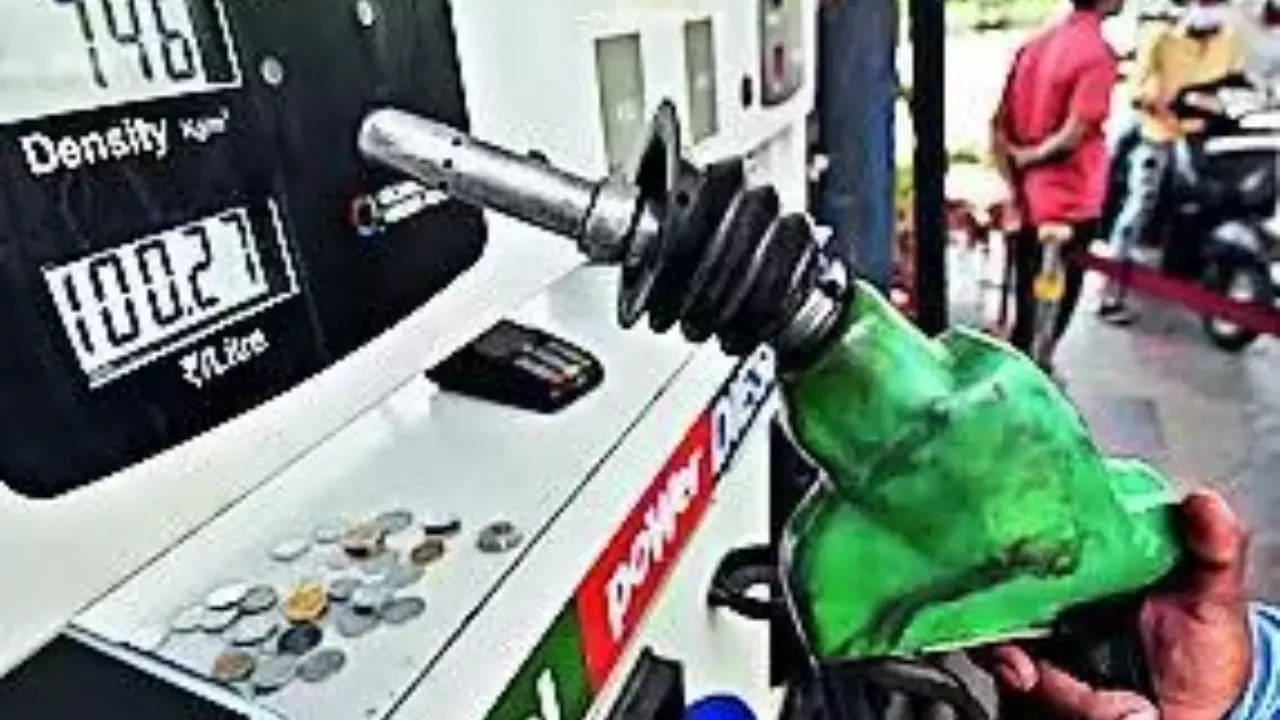[ad_1]
NEW DELHI: State-run fuel retailers are delaying a price cut as oil prices harden towards $80/barrel as the narrative of the market getting tighter gains momentum amid demand outlook turning bullish to coincide with supply cuts from Saudi Arabia and Russia.
Oil prices posted their third straight weekly gains last week, the first since April, with global benchmark Brent hovering above $81/barrel on Friday. The market drew support from the International Energy Agency and OPEC on Thursday predicting in the second half a rebound in demand, particularly from China. Hopes of a pause in US interest rate hikes on cooling inflation data as well as disruption in supply from Egypt and Nigeria added to the sentiment.
Hardening crude has prompted the government to reimpose windfall gains tax on domestic crude, which was cut to zero in May as oil declined towards $70/barrel mark. Export tax on refined products are also likely to come back or be raised, as high oil prices boost refining margins.
The market instability has created a catch-22 situation for state-run fuel retailers. The decline in oil prices had made petrol and diesel hugely profitable at current rates, static since May 2022. If they cut pump prices now and crude hardens towards the end of the year, an upward revision will not be possible because of assembly polls in states such as Rajasthan, MP and Chhattisgarh ahead of the general elections.
Industry executives argue that the state-run retailers are not reducing petrol and diesel prices to recoup past losses and build a buffer to offset losses without burdening consumers in case crude spikes later. Alternatively, a substantial cut in petrol and diesel prices ahead of the polls will be politically more desirable for the NDA. But that will largely depend on some stability in the oil market.
Petrol and diesel prices have been frozen since May 22 last year when the Centre reduced excise duty, taking the total reduction to Rs 13 and Rs 16 per litre for petrol and diesel, to soften the impact of oil prices surging above $100 per barrel after the Ukraine war.
Oil prices posted their third straight weekly gains last week, the first since April, with global benchmark Brent hovering above $81/barrel on Friday. The market drew support from the International Energy Agency and OPEC on Thursday predicting in the second half a rebound in demand, particularly from China. Hopes of a pause in US interest rate hikes on cooling inflation data as well as disruption in supply from Egypt and Nigeria added to the sentiment.
Hardening crude has prompted the government to reimpose windfall gains tax on domestic crude, which was cut to zero in May as oil declined towards $70/barrel mark. Export tax on refined products are also likely to come back or be raised, as high oil prices boost refining margins.
The market instability has created a catch-22 situation for state-run fuel retailers. The decline in oil prices had made petrol and diesel hugely profitable at current rates, static since May 2022. If they cut pump prices now and crude hardens towards the end of the year, an upward revision will not be possible because of assembly polls in states such as Rajasthan, MP and Chhattisgarh ahead of the general elections.
Industry executives argue that the state-run retailers are not reducing petrol and diesel prices to recoup past losses and build a buffer to offset losses without burdening consumers in case crude spikes later. Alternatively, a substantial cut in petrol and diesel prices ahead of the polls will be politically more desirable for the NDA. But that will largely depend on some stability in the oil market.
Petrol and diesel prices have been frozen since May 22 last year when the Centre reduced excise duty, taking the total reduction to Rs 13 and Rs 16 per litre for petrol and diesel, to soften the impact of oil prices surging above $100 per barrel after the Ukraine war.
[ad_2]
Source link

